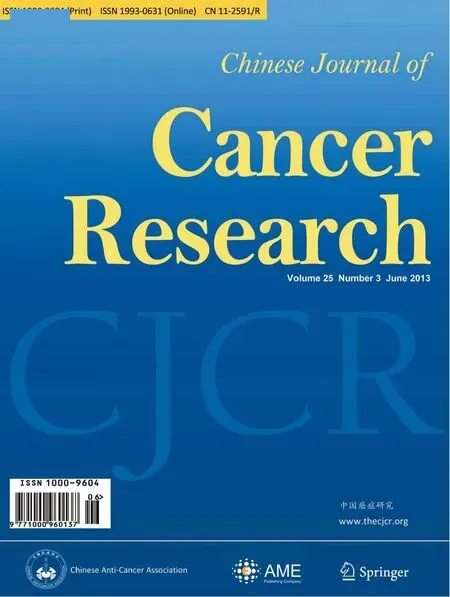New frontiers in peritoneal malignancies
NPO to Support Peritoneal Surface Malignancy Treatment Unit, 1-26 Haruki-Moto-Machi, Kishiwada City, Osaka 596-0032, Japan
New frontiers in peritoneal malignancies
Emel Canbay
NPO to Support Peritoneal Surface Malignancy Treatment Unit, 1-26 Haruki-Moto-Machi, Kishiwada City, Osaka 596-0032, Japan
Corresponding to:Emel Canbay, MD, PhD, FEBS, FACS. NPO to Support Peritoneal Surface Malignancy Treatment Unit, 1-26 Haruki-Moto-Machi, Kishiwada City, Osaka 596-0032, Japan. Email: drecanbay@gmail.com.

Submitted Jun 11, 2013. Accepted for publication Jun 15, 2013.
Scan to your mobile device or view this article at:http://www.thecjcr.org/article/view/2203/3055
I was honored to be asked to write an editorial on‘cytoreductive surgery using peritonectomy and visceral resections for peritoneal surface malignancy’ (1) written by Paul H. Sugarbaker. A strategic approach using peritonectomy and cytoreductive surgery to treat peritoneal cancers has gradually evolved over the past 30 years that has emanated by our impressive leader Paul H. Sugarbaker. He has brought many surgeons together from all over the world for these procedures. His skill made so many of us enthused by peritonectomy procedures and cytoreductive surgery with long operation time, a major postoperative morbidity and high mortality risk. However, we are all persisted with these procedures because of sometimes moribund patients with peritoneal cancers may cure with peritonectomy procedures and cytoreductive surgery.
Peritonectomy procedures (Sugarbaker Protocol) has been described in 1995 (2). Since then, management of mucinous appendiceal neoplasms including pseudomyxoma peritonei syndrome has shown marked changes. Result from multi institutional study suggests that long-term survival is greatly improved with peritonectomy and cytoreductive surgery in these patients (3). In selected cases with colorectal peritoneal carcinomatosis, peritonectomy and cytoreductive surgery combined with peroperative hyperthermic intraperitoneal chemotherapy improve median survival and produces approximately 30% cure (4-7). Second-look surgery in patients at high risk for locoregional failure in colorectal cancer also was described by Sugarbaker (8). Again, peritonectomy and cytoreductive surgery with peroperative hyperthermic intraperitoneal chemotherapy show approximately 50% long-term survival and marked improvement in peritoneal mesothelioma (9). Furthermore, treatment of liver metastases of colorectal carcinoma to reach a standard of care creates a strong rationale for acceptance of peritonectomy procedures and cytoreductive surgery with peroperative hyperthermic intraperitoneal chemotherapy (10). The options for management of peritoneal surface malignancy have been expanded. Recent trends, peritonectomy and cytoreductive surgery with peroperative hyperthermic intraperitoneal chemotherapy are also promising approach as a new standard of care for gastric cancer (11,12).
The surgical techniques such as aqua dissection (13) and 5-aminolevulinic acid (5-ALA) detection (14) of peritoneal carcinomatosis have been extrapolated from these beginnings. My own combined interests in gastrointestinal malignancies and peritoneal malignancy have stimulated me to go and expand my surgical experience from indomitable surgeon Yutaka Yonemura who is a merciless member of Peritoneal Surface Oncology Group International from Japan.
Finally, peritoneal malignancy is a new frontier and will be treated appropriately using peritonectomy procedures and cytoreductive surgery with following Sugarbaker’s and his colleagues’ enormous efforts.
Acknowledgements
Disclosure:The author declares no conflict of interest.
1. Sugarbaker PH. Cytoreductive surgery using peritonectomy and visceral resections for peritoneal surface malignancy. Transl Gastrointest Cancer 2013;2:54-74.
2. Sugarbaker PH. Peritonectomy procedures. Ann Surg 1995;221:29-42.
3. Chua TC, Moran BJ, Sugarbaker PH, et al. Early- andlong-term outcome data of patients with pseudomyxoma peritonei from appendiceal origin treated by a strategy of cytoreductive surgery and hyperthermic intraperitoneal chemotherapy. J Clin Oncol 2012;30:2449-56.
4. Elias D, Gilly F, Boutitie F, et al. Peritoneal colorectal carcinomatosis treated with surgery and perioperative intraperitoneal chemotherapy: retrospective analysis of 523 patients from a multicentric French study. J Clin Oncol 2010;28:63-8.
5. Verwaal VJ, Bruin S, Boot H, et al. 8-year follow-up of randomized trial: cytoreduction and hyperthermic intraperitoneal chemotherapy versus systemic chemotherapy in patients with peritoneal carcinomatosis of colorectal cancer. Ann Surg Oncol 2008;15:2426-32.
6. Glehen O, Kwiatkowski F, Sugarbaker PH, et al. Cytoreduction surgery combined with perioperative intraperitoneal chemotherapy for the management of peritoneal carcinomatosis from colorectal cancer: a multiinstitutional study. J Clin Oncol 2004;22:3284-92.
7. Elias D, Delperro JR, Sideris L, et al. Treatment of peritoneal carcinomatosis from colorectal cancer: impact of complete cytoreductive surgery and difficulties in conducting randomized trials. Ann Surg Oncol 2004;11:518-21.
8. Sugarbaker PH. Second-look surgery for colorectal cancer: revised selection factors and new treatment options for greater success. Int J Surg Oncol 2011;2011:915078.
9. Yan TD, Deraco M, Baratti D, et al. Cytoreductive surgery and hyperthermic intraperitoneal chemotherapy for malignant peritoneal mesothelioma: multi-institutional experience. J Clin Oncol 2009;27:6237-42.
10. Varban O, Levine EA, Stewart JH, et al. Outcomes associated with cytoreductive surgery and intraperitoneal hyperthermic chemotherapy in colorectal cancer patients with peritoneal surface disease and hepatic metastases. Cancer 2009;115:3427-36.
11. Yang XJ, Huang CQ, Suo T, et al. Cytoreductive surgery and hyperthermic intraperitoneal chemotherapy improves survival of patients with peritoneal carcinomatosis from gastric cancer: final results of a phase III randomized clinical trial. Ann Surg Oncol 2011;18:1575-81.
12. Yonemura Y, Elnemr A, Endou Y, et al. Effects of neoadjuvant intraperitoneal/systemic chemotherapy (bidirectional chemotherapy) for the treatment of patients with peritoneal metastasis from gastric cancer. Int J Surg Oncol 2012;2012:148420.
13. Yonemura Y, Elnemr A, Endou Y, et al. Surgical results of patients with peritoneal carcinomatosis treated with cytoreductive surgery using a new technique named aqua dissection. Gastroenterol Res Pract 2012;2012:521487.
14. Canbay E, Ishibashi H, Sako S, et al. Photodynamic detection and management of intraperitoneal spreading of primary peritoneal papillary serous carcinoma in a man: report of a case. Surg Today 2013. [Epub ahead of print].
Cite this article as:Canbay E. New frontiers in peritoneal malignancies. Chin J Cancer Res 2013;25(3):272-273. doi: 10.3978/j.issn.1000-9604.2013.06.10
10.3978/j.issn.1000-9604.2013.06.10
 Chinese Journal of Cancer Research2013年3期
Chinese Journal of Cancer Research2013年3期
- Chinese Journal of Cancer Research的其它文章
- Intrinsic apoptotic pathway and G2/M cell cycle arrest involved in tubeimoside I-induced EC109 cell death
- Effect of early enteral nutrition on postoperative nutritional status and immune function in elderly patients with esophageal cancer or cardiac cancer
- Pharmacological blockage of CYP2E1 and alcohol-mediated liver cancer: is the time ready?
- Risk factors associated with early recurrence of adenocarcinoma of gastroesophageal junction after curative resection
- Hedgehog signaling pathway and ovarian cancer
- Matrix metalloproteinase gene expressions might be oxidative stress targets in gastric cancer cell lines
